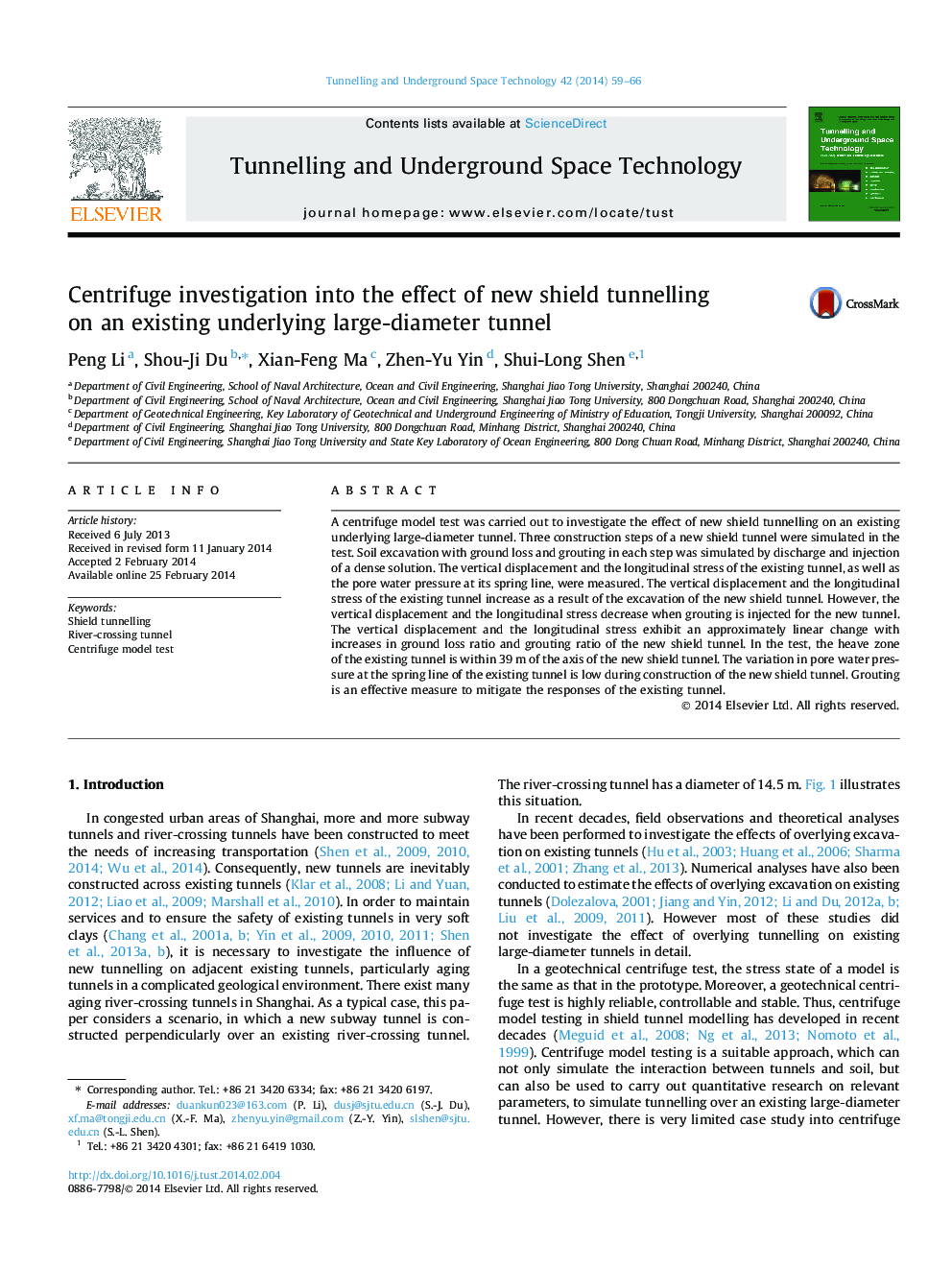| Article ID | Journal | Published Year | Pages | File Type |
|---|---|---|---|---|
| 312315 | Tunnelling and Underground Space Technology | 2014 | 8 Pages |
•We modelled shield tunnelling over an existing tunnel by centrifuge test.•We measured the displacement and the internal force of the existing tunnel.•We found the change patterns of the displacement and the internal force of the existing tunnel.•Response of the existing tunnel to ground loss and grouting of a new tunnel was obtained.
A centrifuge model test was carried out to investigate the effect of new shield tunnelling on an existing underlying large-diameter tunnel. Three construction steps of a new shield tunnel were simulated in the test. Soil excavation with ground loss and grouting in each step was simulated by discharge and injection of a dense solution. The vertical displacement and the longitudinal stress of the existing tunnel, as well as the pore water pressure at its spring line, were measured. The vertical displacement and the longitudinal stress of the existing tunnel increase as a result of the excavation of the new shield tunnel. However, the vertical displacement and the longitudinal stress decrease when grouting is injected for the new tunnel. The vertical displacement and the longitudinal stress exhibit an approximately linear change with increases in ground loss ratio and grouting ratio of the new shield tunnel. In the test, the heave zone of the existing tunnel is within 39 m of the axis of the new shield tunnel. The variation in pore water pressure at the spring line of the existing tunnel is low during construction of the new shield tunnel. Grouting is an effective measure to mitigate the responses of the existing tunnel.
